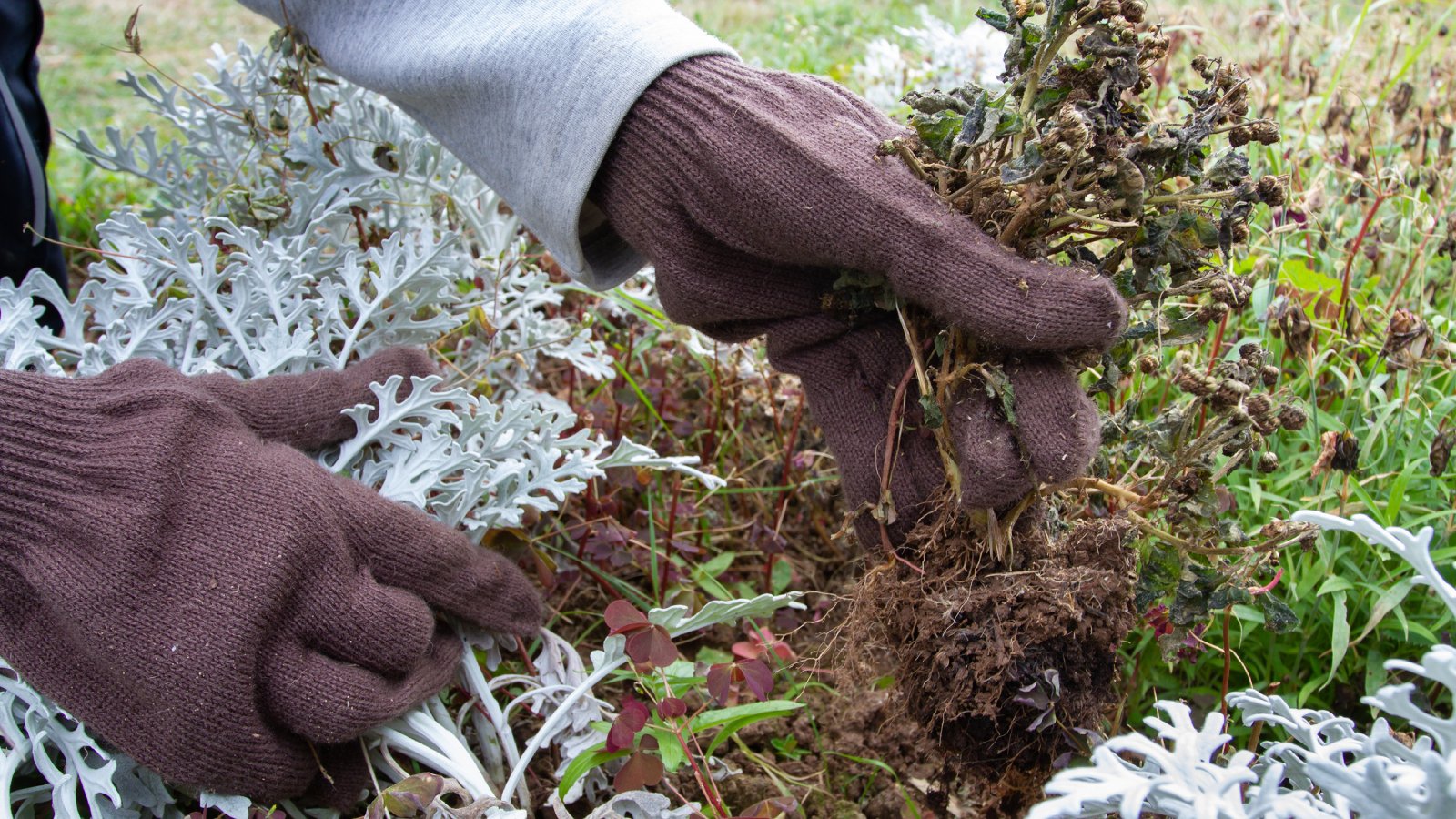How To Kill Weeds In Fall To Prevent Them In Next Year’s Garden
Practicing fall weed control in the garden will help prevent the pesky invaders from cropping up next spring when they are vigorous and harder to deal with.


Fall is the perfect time for weed control. Get a jump on spring weed control by zapping broadleaf weeds in the fall, while they are young enough to manage. In the springtime, the weeds grow rapidly and flower. Waiting till then to eradicate the weeds is futile; they are too mature to be affected by herbicide.
How To Kill Weeds In Fall To Prevent Them In Next Year’s Garden
Many perennial weeds and winter annual broadleaf weeds can be effectively controlled in autumn. You can manually hoe or pull them, or for stubborn weeds, you can apply pre-emergents or broadleaf herbicides.
Winter Annual Broadleaf Weeds
What is a weed? Winter annual broadleaf weeds that germinate in the fall and make a big spring show include dead nettle, common chickweed and henbit. They can be controlled with pre-emergents, herbicides, or by manually pulling them up.
Pre-emergents need to be applied before the weeds germinate in the fall, usually in September. Choose a product according to where you want to use it, in a garden or in the lawn, as the product ingredients will differ. Be sure to identify the weeds you want to eradicate, and those weeds should be listed on the label. Preen Garden Weed Preventer is a great option for the garden, while Scott's Turf Builder Crabgrass Preventer works well for the lawn. Both are available on Amazon.
If you miss the pre-emergent window, and weeds are actively growing, you can hoe, rake, or dig up the seedlings if you prefer to avoid chemicals or if you have only a few weeds. This heavy duty garden hoe is perfect for the job. Also, mowing often to prevent them from going to seed will help.
Fall weed control may also include liquid or granular broadleaf herbicides that will kill winter annual seedlings. (See “Broadleaf Herbicides for Fall Weeds” below.)
Perennial Broadleaf Weeds
Perennial broadleaf weeds are another story. They are more difficult to control manually because they have a more extensive root structure. Dandelions, for example, have a long taproot and are difficult to dig and get the entire root. Any missed section that is left behind will re-rerooted. However, if you only have a few in an out-of-the-way place, you may want to leave them to bloom in spring as an early pollinator plant. Remove the seed head once it emerges, though, or they can increase quickly.
Sign up for the Gardening Know How newsletter today and receive a free copy of our e-book "How to Grow Delicious Tomatoes".
Other common broadleaf perennial weeds include Canada thistle, bindweed, pokeweed, plantain, and ground ivy. Perennial weeds die back in the winter and regrow in the spring just like our ornamental perennials. In autumn, weeds are storing nutrients to prepare for winter and this is the best time to knock them out with herbicides. The chemical translocates down to the roots along with the carbohydrates that are moving down to the roots.
Perennial seeds also germinate in the fall and those seedlings are vulnerable to herbicides.
Broadleaf Herbicides for Fall Weeds
Broadleaf herbicides come in liquid or granular form. Experts say the liquid product covers more of the foliage so may be the better choice. Either product will work better if the air temperature is above 55 degrees F (12.8 degrees C). Let the grass grow for a few days before applying so there are plenty of leaf blades.
For the liquid product, we recommend Southern Ag 2,4-D Weed Killer, available on Amazon. Spray when the wind does not exceed 5 mph to avoid the product drifting onto desirable plants. Watch the weather reports so you can apply it when rain is not forecast for at least 24 hours after spraying.
Granular broadleaf herbicides often are combined with fertilizer. This professional-grade granular pre-emergent weed control herbicide from Amazon should do the trick. The grass should be damp so the granules will stick to it for better absorption. You can apply it after watering the lawn or in the morning when the dew is still on the grass. Allow at least 24 hours after application before watering.
Whether using herbicides in gardens in a liquid or granular form, do not mow for three or four days after the application so the formula has a chance to move through the leaves to the roots.

After graduating from Oklahoma State University with a degree in English, Susan pursued a career in communications. In addition, she wrote garden articles for magazines and authored a newspaper gardening column for many years. She contributed South-Central regional gardening columns for four years to Lowes.com. While living in Oklahoma, she served as a master gardener for 17 years.